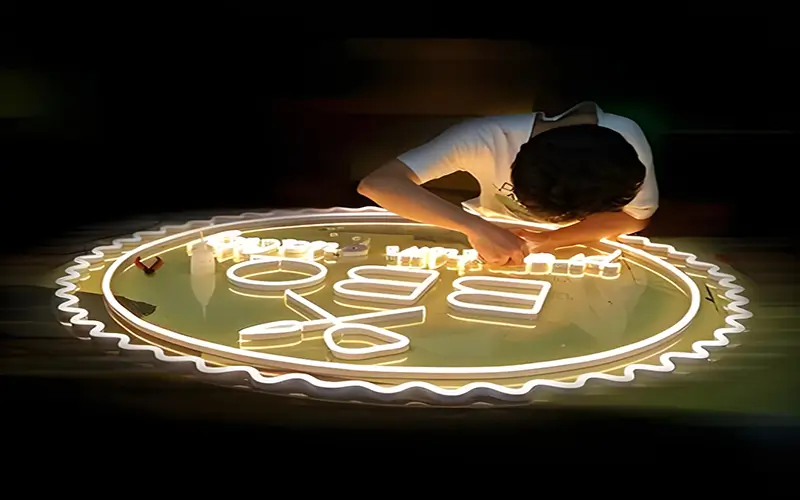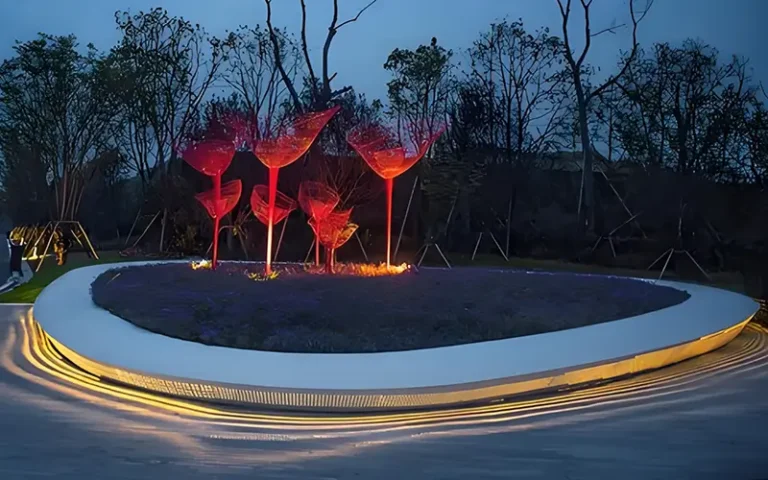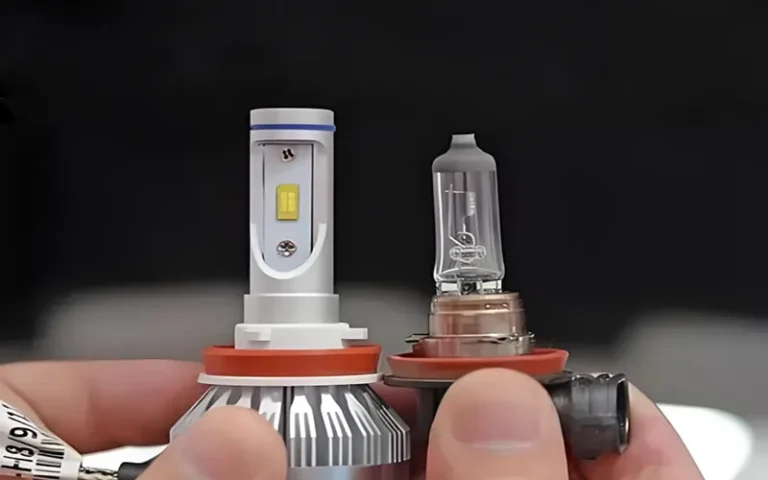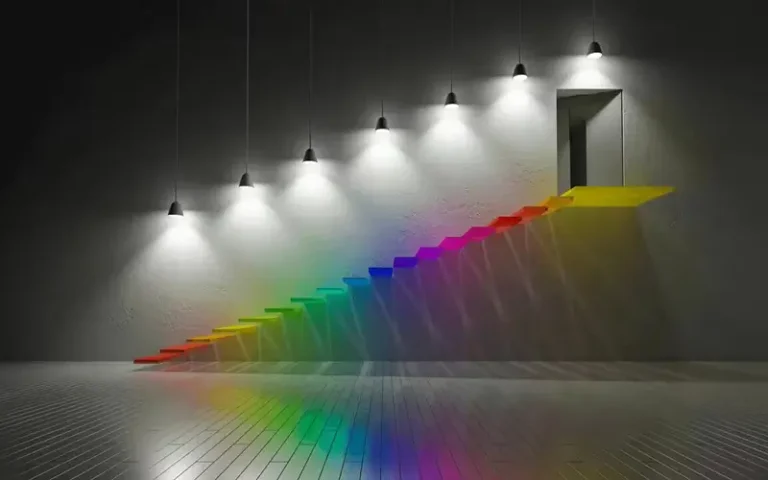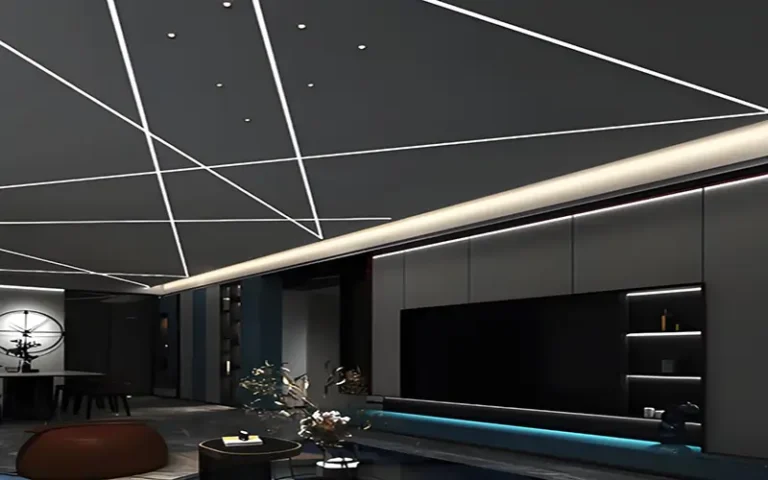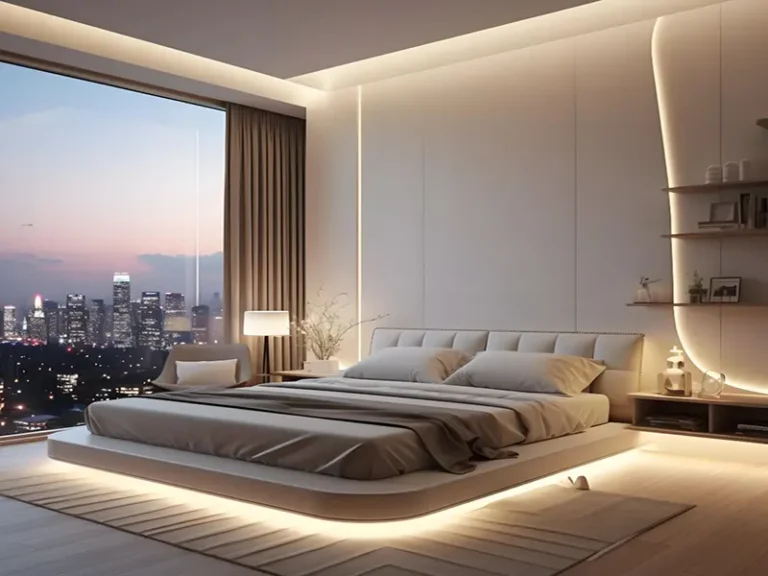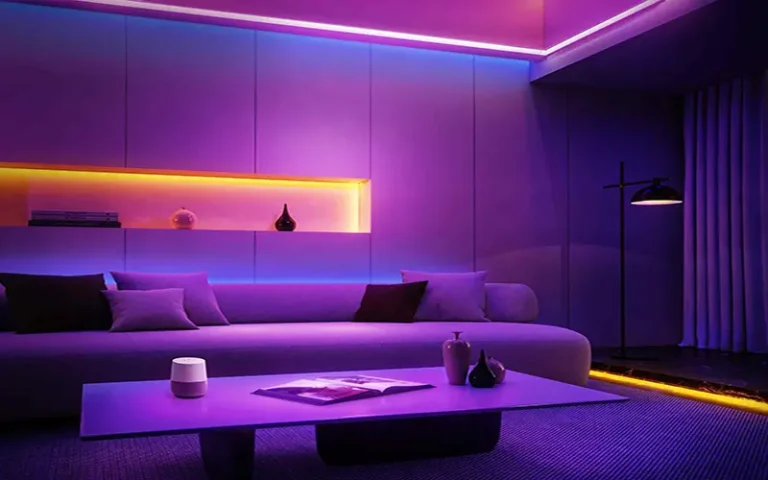How to Make a DIY LED Neon Sign?
LED neon lights have many uses, and making your own LED neon lights is a fun and creative way to add a personal touch to your space while providing lighting. They can be used for commercial purposes, and are also a DIY project loved by home decoration enthusiasts. Unlike traditional neon lights that require glass tubes and special equipment, LED neon lights use flexible LED strip lights, which are easier to use and safer for home use. So let’s DIY LED neon sign!
What are LED Neon Signs?
LED neon is an innovative and modern LED lighting product, and it is also an alternative to traditional neon lights. Instead of using neon gas in a glass tube, LED neon uses flexible LED light strips to simulate the glow of neon lights.
We encapsulate these LED light strips in silicone sleeves that can be bent into any shape or pattern. Compared with traditional neon lights, LED neon lights are brightly colored, energy-saving, durable and safer.
And now LED neon lights can be used outdoors, and they are easy to install and run. There will be no additional costs, and the lifespan is very long.
How Do LED Neon Signs Work?
LED neon signs work by encapsulating low-voltage LED lights in flexible silicone tubes. These LED lights emit a bright glow when powered, and the flexible shell allows the sign to be molded into any shape.
LED neon lights are similar in technology to standard LED lighting, but have the added advantage of using a continuous light source that simulates the soft sheen of neon glass.
LED strips are generally low-voltage 12V and 24V, and 24V is generally chosen. With a 24V power supply of sufficient power, the adapter converts the electrical energy into the voltage required by the LED light, making it emit a bright glow.
How Many Colors Can LED Neon Lights Do?
One of the main advantages of LED neon lights is their ability to display rich colors. We all know that traditional neon lights usually provide limited color options (mainly red, blue, and yellow).
LED neon lights can be customized in almost any color, from warm white to bright pink, blue, green, and even multi-color gradients. For LED neon signs, many people will choose RGB.
In addition, users can control the color and brightness through a remote control or smartphone app, giving you the ultimate flexibility in sign design.
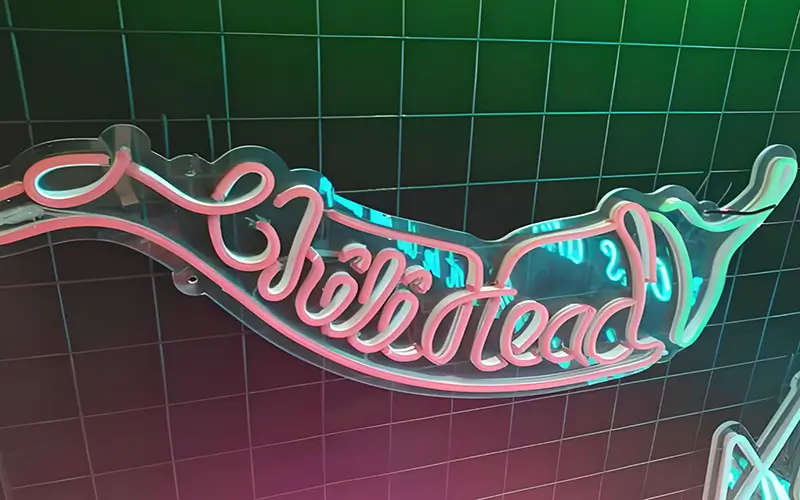
How Do You DIY LED Neon Sign?
Making your own LED neon sign is easy. And now LED neon tubes are available in cut and custom lengths, so the steps are simple.
Materials Needed to Make a DIY LED Neon Sign
Before you get started, you’ll need a few essential materials to bring your LED neon sign to life:
- LED Neon Flex: This is the main lighting material of the sign.
- Power Supply: A DC power adapter that matches the voltage requirements of your LED strip.
- Controller (Optional): If you want to add color-changing or dimming features, a compatible controller is needed.
- Acrylic Sheet (Optional): A backing material to provide support and shape for the sign.
- Wire & Connectors: To make the necessary electrical connections and ensure the LED strip is securely powered.
- Glue or Adhesive: To attach the LED neon flex to your backing material or frame.
- Tools: Scissors or a utility knife for cutting the LED strip, a soldering iron for connections (if necessary), and a ruler for accurate measurements.
How to Design a LED Neon Sign?
Determine the Purpose and Place of Installation: Think clearly about where you want your neon sign to be installed and the purpose of it, whether it is just for lighting or you need it to have some meaning.
Sketch Your Design: Start by sketching your desired sign on paper or using graphic design software. Consider the message, logo, or shape you want to create.
Measure the Space: Measure the space where you plan to hang your sign to ensure it fits perfectly. This will help determine the size of the LED neon strip you need.
Choose Your Color Scheme: Choose the color you want for your sign. RGB is the most common choice. If you use RGB LED neon strips, you will have more color customization options.
Decide on the Font: If you’re designing a text-based sign, choose a font that’s easy to read and works well with the curved shapes of LED neon strips.
How to DIY an LED Neon Sign?
Once we have designed the sign, we can attach the LED neon tubes. Let’s see the effect.
Cut the LED Neon Strip:
Carefully measure the length of the sign and cut the LED neon strip to match the length of your design. Be sure to check the length of the LED neon strip ahead of time to determine where to cut the LED strip.
Construct the shape of the neon strip
Gently bend the LED strip into the shape you designed. Use the flexibility of the neon strip to create curves and lines as needed.
Mount to Backing
If you are using acrylic sheet or other backing material, secure the LED neon strip in place with glue or tape. Make sure the strip is securely connected, but not too tight.
Connect the LED Strip
Connect the LED strip to the power source using the necessary connectors. Carefully solder the connections if needed to ensure it is securely and firmly in place.
Testing the LED Neon Sign
Before installing without fixing, plug in the power source and test the LED neon sign to ensure that all parts light up properly.
Where to Hang an LED Neon Sign?
LED neon signs are suitable for both indoor and outdoor use, and you can choose according to your needs.
Living Room: Use a neon sign to brighten up your living area and create a focal point on the wall.
Bedroom: Personalize your room with a neon sign with your name or number to add a touch of fun and warmth.
Business Signage: LED neon signs are perfect for storefronts or offices to create eye-catching signs that are both modern and energy-efficient.
Event Spaces: Create a custom neon sign for weddings, parties, or events to set the mood and add a personal touch.
Personal stores: LED neon signs can decorate your store, making your store sign particularly eye-catching at night and attracting the attention of passers-by.
What Are the Benefits of LED Neon Signs?
There are still many benefits to using LED neon lights to DIY LED neon sign. The appearance is very attractive and it is a more modern design.
- Unique Look: LED neon signs are visually striking and can add a unique touch to any space. The linear look is also sleek and modern.
- Flexibility: The flexible nature of LED neon strips allows them to be shaped into any design or form, providing endless creative possibilities.
- Durability: LED neon signs are highly durable and can last for many years.
- Energy efficiency: LEDs are more energy-efficient, so LED neon lights are more energy-efficient than traditional neon lights.
- Customization: This LED neon tube supports customization of size, color temperature and power. You can customize your neon lights according to your personal style.
Differences Between Traditional Neon and LED Neon
While both traditional and LED neon signs produce similar glowing effects, there are some key differences between them:
1. Raw Materials
The most obvious difference between traditional and LED neon signs is the light emitter.
- Traditional Neon Signs: These neon signs use glass tubes filled with neon gas, which glows when electricity is applied to them. The glass tubes are often bent by hand into specific shapes or letters, and the neon gas inside gives off a unique bright, vivid glow.
- LED Neon Signs: In contrast, LED neon signs use flexible LED strips enclosed in silicone or PVC tubing. These strips contain small LEDs, and the flexibility of LED neon signs makes them easier to shape. No glass bending is required, making them suitable for more complex designs and easier to handle.
2. Energy Efficiency
One big advantage of LED neon lights over traditional neon lights is that they are energy efficient, which can save you money on electricity.
- Traditional Neon Signs: Because the glass tubes require high voltage to ionize the neon gas inside, neon lights are relatively energy-poor. In addition, the light produced by traditional neon lights usually generates a lot of heat, which is not dissipated very well.
- LED Neon Signs: LED technology is known for its low energy consumption. LED neon lights use much less power than glass neon lights while still giving off the same bright and vivid glow. LED lights are very efficient because they convert more energy into light rather than heat.
3. Durability
LED neon lights are more durable because they are easy to transport. They are also simple to install and do not require more frequent repairs or replacements.
- Traditional Neon Signs: Neon glass tubes are fragile and difficult to transport, and can easily break if dropped or mishandled. Although they are usually enclosed in protective covers, the glass itself is still susceptible to impact, temperature changes, and even natural wear and tear.
- LED Neon Signs: LED neon lights are made of flexible, shatterproof materials and are more durable. LED neon lights can withstand extreme weather conditions and temperature fluctuations. Because the tubes are enclosed in silicone or PVC tubes, they are more resistant to damage caused by collisions, falls, and external forces.
4. Production and installation costs
The production and installation costs of the two types of neon lights are also quite different. In comparison, LED neon lights are more affordable.
- Traditional Neon Signs: Neon lights are usually more expensive to manufacture and install. The process of bending the glass tubes by hand, filling them with neon gas and fixing them to the frame requires expertise and labor. In addition, extra care is required during transportation and installation, which all increase costs.
- LED Neon Signs: In comparison, LED neon lights are more affordable. Their materials (LED light strips and silicone tubes) are usually cheaper than the glass and neon gas used in traditional neon lights. In addition, LED neon lights do not require expensive transformers and the installation process is simpler. Therefore, LED neon lights are a more cost-effective choice both in terms of production and long-term maintenance.
5. Customization and Flexibility
When it comes to product design flexibility and customization, LED neon lights have a clear advantage.
- Traditional Neon Signs: Customizing traditional neon lights can be difficult due to the limitations of the glass bending process and the complexity of making complex shapes. Since the tubes themselves are rigid, making curved or complex shapes is both challenging and costly.
- LED Neon Signs: LED neon lights can be easily shaped into more complex designs and patterns due to their flexibility. This makes them easier to adapt to various creative ideas. It can be bent into almost any design shape you want.
6. Post-maintenance
Maintenance and repair of traditional neon and LED neon signs also differ greatly. Today’s LED neon signs require almost no maintenance and repair costs.
- Traditional Neon Signs: Over time, traditional neon signs may develop problems such as gas leaks, broken glass, or wiring failures. Repair costs can be high because replacing a damaged neon tube usually requires replacing the entire neon sign.
- LED Neon Signs: LED neon signs are easier to maintain. Because they are made of durable materials and use LED technology, they usually last longer and require fewer repairs. If an LED light strip fails, we only need to replace the broken part and use it again.
Conclusion
Making a DIY LED neon sign is an exciting and fulfilling project that lets you unleash your creativity while creating something that is both functional and beautiful. With the right materials, tools, and a little patience, you can create a custom neon sign that fits your style or business needs.
ESSENLED specializes in high-quality LED neon lights, ensuring you get the best materials for your DIY LED neon sign projects. We offer a 5-year product quality guarantee, providing you with reliable, customizable lighting solutions for all your lighting needs.
FAQs
We recommend using flexible LED neon ropes, also known as silicone LED neon strips. They are generally powered by low voltage 12V and 24V. They come with a diffuse silicone shell that simulates real neon lights and can be easily bent into various shapes and letters.
If you are DIYing your own neon signs, it is best to choose transparent acrylic and foam boards for the backplane, which can create a floating feeling and is particularly practical.
Our LED neon signs are generally powered by low voltage 12V and 24V. You need to choose the right power and voltage power adapter (usually 12V or 24V, depending on your LED strip).
Of course, you need to choose RGB LED neon strips. But this must be paired with a compatible RGB LED controller. This way you can control the RGB LED neon tube at any time.

